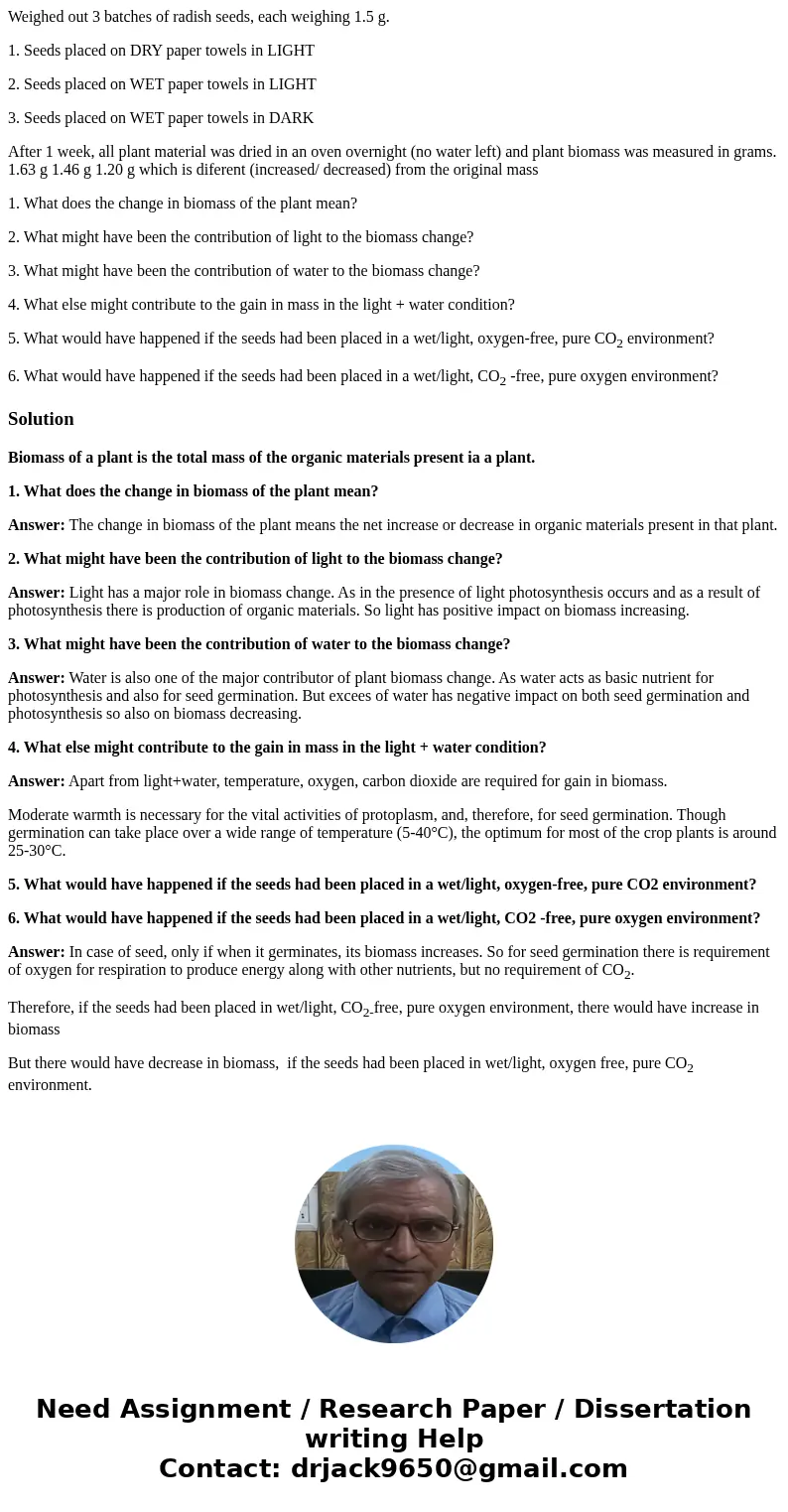Weighed out 3 batches of radish seeds each weighing 15 g 1 S
Weighed out 3 batches of radish seeds, each weighing 1.5 g.
1. Seeds placed on DRY paper towels in LIGHT
2. Seeds placed on WET paper towels in LIGHT
3. Seeds placed on WET paper towels in DARK
After 1 week, all plant material was dried in an oven overnight (no water left) and plant biomass was measured in grams. 1.63 g 1.46 g 1.20 g which is diferent (increased/ decreased) from the original mass
1. What does the change in biomass of the plant mean?
2. What might have been the contribution of light to the biomass change?
3. What might have been the contribution of water to the biomass change?
4. What else might contribute to the gain in mass in the light + water condition?
5. What would have happened if the seeds had been placed in a wet/light, oxygen-free, pure CO2 environment?
6. What would have happened if the seeds had been placed in a wet/light, CO2 -free, pure oxygen environment?
Solution
Biomass of a plant is the total mass of the organic materials present ia a plant.
1. What does the change in biomass of the plant mean?
Answer: The change in biomass of the plant means the net increase or decrease in organic materials present in that plant.
2. What might have been the contribution of light to the biomass change?
Answer: Light has a major role in biomass change. As in the presence of light photosynthesis occurs and as a result of photosynthesis there is production of organic materials. So light has positive impact on biomass increasing.
3. What might have been the contribution of water to the biomass change?
Answer: Water is also one of the major contributor of plant biomass change. As water acts as basic nutrient for photosynthesis and also for seed germination. But excees of water has negative impact on both seed germination and photosynthesis so also on biomass decreasing.
4. What else might contribute to the gain in mass in the light + water condition?
Answer: Apart from light+water, temperature, oxygen, carbon dioxide are required for gain in biomass.
Moderate warmth is necessary for the vital activities of protoplasm, and, therefore, for seed germination. Though germination can take place over a wide range of temperature (5-40°C), the optimum for most of the crop plants is around 25-30°C.
5. What would have happened if the seeds had been placed in a wet/light, oxygen-free, pure CO2 environment?
6. What would have happened if the seeds had been placed in a wet/light, CO2 -free, pure oxygen environment?
Answer: In case of seed, only if when it germinates, its biomass increases. So for seed germination there is requirement of oxygen for respiration to produce energy along with other nutrients, but no requirement of CO2.
Therefore, if the seeds had been placed in wet/light, CO2-free, pure oxygen environment, there would have increase in biomass
But there would have decrease in biomass, if the seeds had been placed in wet/light, oxygen free, pure CO2 environment.

 Homework Sourse
Homework Sourse